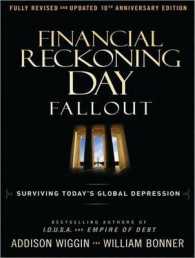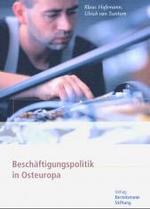- ホーム
- > 洋書
- > 英文書
- > History / World
Full Description
This book examines China's educational transformation between 1895 and 1926. Based on three case studies, it explores the rise of a new field of education and reveals the intricate relationship between educational reforms, intellectual societies and revolutionary movements.
Through meticulous historical analysis, the book chronicles the evolution of China's modern education system during a period of profound social and political change. Part I examines how new-style schools replaced the traditional imperial examination system in Hunan Province from 1895 to 1913, thereby transforming the educational landscape. Part II focuses on the influential reforms instituted at Peking University, which established a balance between academic, political and moral orthodoxies to reshape China's intellectual sphere. Part III explores the crucial connection between secondary schools and the early communist revolutionary movement, demonstrating how educational institutions became incubators for revolutionary ideas and activities. By examining these interconnected developments, the book illuminates how educational reform became intertwined with broader currents of social transformation and revolutionary change in early twentieth-century China.
This work will appeal to historians of modern China, as well as to scholars and students of Chinese studies interested in the intersection of educational history, historical sociology and modern Chinese history and revolutionary movements.
Contents
1. Introduction Part I: From the Field of Imperial Examination to the Field of Post-Imperial Examination: Hunan Province, 1895-1913 2. Introduction to Part I 3. The Field of Imperial Examination and the Regeneration of Social Dominance Relationship before 1895 4. The Establishment of a New Dominance Relationship and the Fall of the Imperial Examination: Hunanese Society, 1895-1905 5. Regeneration of the Social Dominance Relations and the Field of Post-Imperial Examination: Hunanese Society, 1905-1913 Part II: The Rise of the "Academic Society:" Cai Yuanpei and Peking University, 1917-1923 6. Introduction to Part II 7. The Academic Culture before Cai Yuanpei's Appointment 8. "Inclusiveness" and University as the Modern Academic Center 9. "Educational Independence" and University as the Field of Academic Autonomy 10. "Sharing Common Destiny" and University as the Academic Base for National Revitalization 11. "Cultivation of Personality" and University as the Community of Scientific Discourse Part III: Secondary Schools and the Communist Revolution in China: Jiangxi, 1922-1926 12. Introduction to Part III 13. "Torchbearer," "Cultivator" and "Bridge Builder:" Three Roles in the Rise of the Communist Movement in Jiangxi 14. Nanchang Second Middle School and Its Reform Society: A Concentric Revolution Network 15. Nanchang First Normal School: The Lattice-Styled Revolutionary Network 16. Conclusion








